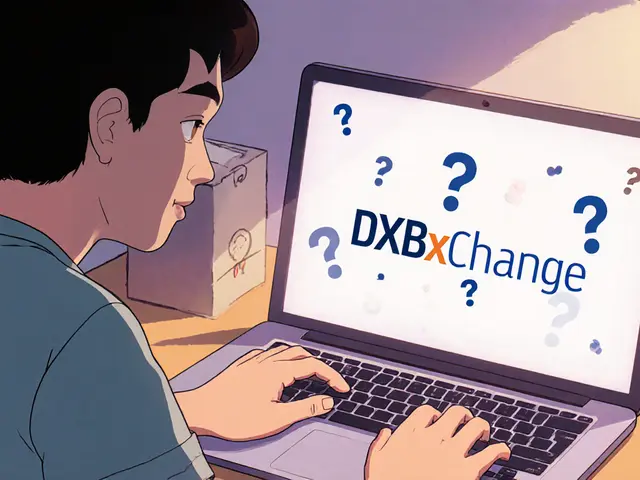Futures-Spot Price Basis Calculator
Input Prices
Basis Interpretation
Enter spot and futures prices to calculate the basis.
How does this affect trading? When futures are trading at a premium to spot (positive basis), arbitrageurs will buy spot assets and sell futures contracts. This action pushes spot prices up and futures prices down until the gap narrows.
Why futures markets don’t just predict spot prices-they shape them
When you see Bitcoin jump 8% in minutes, it’s rarely because someone just bought a ton of it on Coinbase. More often, it’s because futures contracts on Binance or CME spiked first. The same thing happens with gold, crude oil, even soybeans. Futures markets aren’t just bets on the future-they’re the engine that drives real-time price changes in the spot market today.
The mechanics: How futures and spot prices connect
Futures contracts are agreements to buy or sell an asset at a set price on a future date. Spot prices are what you pay right now, on the spot. At first glance, they seem separate. But they’re locked together by one force: arbitrage.
Imagine Bitcoin is trading at $60,000 in the spot market, but the December futures contract is priced at $61,500. Traders with access to both markets will buy Bitcoin on the spot market and simultaneously sell the futures contract. They lock in a $1,500 profit without any directional risk. This trade pushes the spot price up and drags the futures price down-until the gap closes. This isn’t theory. It happens in real time, often within seconds.
At contract expiration, the futures price must equal the spot price. If it doesn’t, arbitrageurs keep trading until it does. That’s not a coincidence-it’s math. This convergence is the backbone of how futures influence spot prices.
Price discovery: Where the real information flows
Who’s setting the price? The spot market? Or the futures market?
Research from the University of Paris analyzed over 1,200 daily price movements across gold, crude oil, wheat, and copper from 2010 to 2023. Their findings? Futures markets accounted for 68.3% of price discovery. Spot markets contributed only 31.7%. That means most new information-central bank moves, geopolitical news, supply chain shocks-hits futures first. Then, through arbitrage, it flows into the spot market.
This is especially true for energy and metals. Crude oil futures lead spot price movements by 92.4%, according to RePEc data. Even in crypto, Bitcoin futures on CME often move before spot exchanges react. Institutional traders use futures because they’re more liquid, have tighter spreads, and allow leverage. So when big players position themselves in futures, they’re signaling where they think the spot price is headed-and the market listens.

Volatility: Does futures trading make spot prices more unstable?
Some say futures markets add noise. Others say they calm the storm. The truth? It depends on what’s shaking the market.
When a supply shock hits-like a hurricane wiping out Gulf Coast oil rigs-futures prices spike fast. That spike pulls spot prices up too. In this case, futures amplify volatility. But when the shock comes from consumer demand-say, a sudden drop in gasoline usage-futures help absorb the shock. Traders hedge, spread risk, and stabilize prices. Studies show futures reduce spot volatility by up to 22.8% in consumption-driven shocks.
But inventory shocks? That’s where things get messy. If a trader hoards copper in warehouses, waiting for prices to rise, futures can turn into a speculative weapon. Research from Goetz et al. (2021) found futures trading can increase spot volatility by up to 27.4% under these conditions.
And it’s not just commodities. Crypto futures have the same dual effect. During the 2022 Terra collapse, Bitcoin futures surged as traders rushed to short spot. That fueled a cascade of liquidations and a 30% drop in spot prices within hours. Futures didn’t cause the collapse-but they accelerated it.
When futures fail to predict spot prices
Futures aren’t perfect. They’re most reliable in calm markets. During extreme conditions, their predictive power drops.
Consensus.app’s 2023 analysis of 17 studies found futures predict spot prices with 87% accuracy under normal conditions. But during bear markets, that drops 42.6%. In bull markets, it falls 38.9%. Why? Because panic overrides logic. Traders ignore fundamentals. They chase momentum. Arbitrage breaks down.
Take soybeans. During normal growing seasons, futures predict spot prices with 83.7% accuracy. But during droughts? That drops to 56.2%. The same thing happened with Ethereum in 2024. When the SEC delayed ETF approvals, spot prices swung wildly, but futures lagged. Why? Because the news wasn’t priced in yet-and futures traders were waiting for clarity.
Even gold, which moves with inflation and central bank policy, sees futures lose predictive power when real-world supply chains break down. In 2023, gold futures traded at a 12.4% premium to spot for three straight days-until traders realized the premium wasn’t backed by physical demand. Then it reversed.

Who’s really driving the market?
It’s not retail traders. It’s institutions.
CME’s 2022 survey of 347 institutional traders showed 78.3% use futures data as their primary input for spot price forecasting. Energy traders? 87.6%. Agricultural traders? 69.2%. Crypto traders? Around 75%, based on on-chain data from CoinMetrics.
These aren’t gamblers. They’re portfolio managers, hedge funds, and commodity producers. They use futures to hedge risk. But in doing so, they set the tone for the entire market. When a pension fund sells $500 million in crude oil futures, it’s not just betting on lower prices-it’s telling the spot market to follow.
Algorithmic trading has made this faster. Arbitrage opportunities now last an average of 17.3 seconds before being snatched up. High-frequency firms use machine learning models to detect tiny price gaps between futures and spot. One 2023 University of Chicago study showed these models improved spot price forecasts by 31.7% over traditional GARCH models.
What this means for traders and investors
If you trade spot assets-whether Bitcoin, gold, or wheat-you’re already trading futures, even if you don’t realize it.
Here’s how to use this knowledge:
- Watch futures volume and open interest. A sudden spike in futures buying often precedes a spot rally.
- Check the basis-the difference between futures and spot price. A widening basis can signal a coming price adjustment.
- During news events, futures react first. Use them as an early warning system.
- Avoid chasing spot prices that are far out of line with futures. That gap will likely close.
Don’t treat spot and futures as separate markets. Treat them as one system. The futures market is the brain. The spot market is the body. When the brain moves, the body follows.
The future: Faster, smarter, riskier
By 2027, algorithmic trading will make up 87.4% of futures volume, according to the Bank for International Settlements. That means price moves will happen faster. Information will flow in milliseconds. But so will crashes.
ESMA’s 2023 stress test showed that during extreme events, information moves 227% faster from futures to spot-but with 43.6% more errors. Flash crashes could spread from futures to spot in under a second.
Regulators are trying to keep up. IOSCO introduced new metrics in June 2024 to monitor futures-spot interactions. But technology is moving faster than rules.
The core truth hasn’t changed since 1848: futures markets lead price discovery. The only thing that’s changed is how fast it happens-and how many people are caught off guard.
Do futures markets cause spot price volatility?
Not always. Futures markets can either increase or reduce spot volatility depending on the source of the shock. Consumption shocks (like lower demand) usually see futures stabilize spot prices by 22.8%. But inventory hoarding or production disruptions can make spot prices more volatile, with futures amplifying swings by up to 27.4%.
Why do futures prices lead spot prices?
Futures markets are more liquid, have tighter spreads, and attract institutional traders who react faster to news. When new information hits-like a Fed rate decision or a supply disruption-it’s priced into futures first. Arbitrage then forces spot prices to catch up. Studies show futures drive 68.3% of price discovery across major commodities.
Can you profit from the futures-spot price gap?
Yes, but it’s hard. Arbitrage between futures and spot markets typically lasts only 17.3 seconds. To profit, you need low transaction costs (under 0.28% per trade), fast execution, and access to both markets. Retail traders rarely succeed without algorithmic tools. Most of the profit goes to hedge funds and high-frequency firms.
Are futures markets more reliable than spot markets for forecasting?
In normal conditions, yes. Futures predict spot prices with 87% accuracy on average. But during extreme market stress-like a crash or panic-accuracy drops by 40% or more. Spot markets can be more reflective of real-time sentiment, but futures are better at processing new information quickly.
Does blockchain technology change how futures affect spot prices?
Not fundamentally. Blockchain makes trading faster and more transparent, but the economic relationship remains the same. Futures still lead spot prices through arbitrage. However, crypto futures on platforms like Binance and Bybit are less regulated and more prone to manipulation, which can create temporary distortions not seen in traditional markets.




23 Comments
Adrian Bailey
Man, I just read this whole thing and my brain feels like it got run through a blender. But in a good way? Like, I always thought spot prices were the boss, but now I get it-futures are the sneaky genius in the back room pulling the strings. And the part about arbitrage lasting 17.3 seconds? That’s wild. I bet my toaster has more processing power than most retail traders. 😅
Michael Heitzer
It’s not just markets-it’s power. The futures market is the silent philosopher of finance. It doesn’t shout, it doesn’t beg. It just arbitrages. And in doing so, it reveals the true nature of value: not what people think it is, but what the system forces it to be. The spot market is the body. The futures market? That’s the soul. And right now, the soul is running on HFT algorithms with more precision than a Swiss watch. We’re not trading assets anymore-we’re trading time, speed, and perception. And most of us don’t even know we’re the ones being traded.
Rachel Everson
This is actually so helpful! I’ve been trying to understand why my BTC buys keep getting wrecked right after I pull the trigger-and now it makes sense. I’ve been chasing spot while the smart money’s already in futures. Gonna start watching CME volume before I trade. Thanks for laying this out so clearly. 🙌
Raymond Day
THIS IS WHY YOU’RE LOSING MONEY. 😭 You think you’re trading Bitcoin? NO. You’re trading the ghosts of hedge funds who already moved 3 hours ago. CME doesn’t care about your FOMO. It cares about your margin call. And when it sees you? It SMASHES you. That 30% drop in 2022? That was a funeral for retail traders who didn’t know the difference between spot and futures. You’re not investing. You’re bait.
Kylie Stavinoha
The elegance of arbitrage is that it’s not manipulation-it’s correction. The market doesn’t lie. It just takes time to catch up. Futures are the conscience of price. When gold trades at a 12.4% premium to spot for three days? That’s not speculation. That’s the system screaming, ‘Something’s wrong!’ And when it reverses? That’s the market healing itself. We’ve forgotten that markets aren’t just about profit-they’re about equilibrium. And equilibrium, in all its forms, is deeply human.
Ashley Mona
So if futures are the brain, then retail traders are the reflexes-slow, clumsy, and always reacting too late. But here’s the twist: sometimes the reflexes are the only thing keeping the body alive. When everyone’s fleeing to futures, the spot market is where the real people still are-buying gold because they’re scared, buying BTC because they believe. Maybe the ‘real’ price isn’t in the algorithm. Maybe it’s in the fear and hope of the crowd. Just a thought.
Rebecca Saffle
Ugh. Another Wall Street whitepaper dressed up as wisdom. Let me guess-next you’ll tell me the Fed’s secret handshake moves oil prices? Newsflash: futures markets are rigged. Institutions own them. Algorithms own them. And you? You’re the data point. Stop pretending this is about ‘price discovery.’ It’s about control. And they don’t want you to know how deep the rabbit hole goes.
Michelle Elizabeth
It’s funny how people act like this is some new revelation. Back in ’08, I watched crude futures dictate gas prices while my grandma paid $4.50/gallon. Same thing with soybeans in Iowa. Futures were always the puppet master. The only difference now? The puppets think they’re dancing. The algorithm doesn’t care if you’re ‘investing’ or ‘saving.’ It just wants your order flow. You’re not a participant. You’re a sensor.
Stephanie Platis
Let me correct a critical error in your analysis: you state that futures ‘must’ converge with spot at expiration. This is only true under the assumption of perfect arbitrage-which, as you later admit, breaks down during panic events. Therefore, your entire ‘mathematical backbone’ argument is contingent on conditions that are demonstrably false during volatility spikes. Furthermore, your citation of ‘RePEc data’ lacks a specific source. Please provide a DOI or link. Otherwise, this reads like a marketing pamphlet disguised as scholarship.
Brian Gillespie
Spot’s the heartbeat. Futures are the EKG.
dhirendra pratap singh
Bro… I just watched Bitcoin futures spike 5% while spot was flat. Then 20 minutes later, spot went nuts. I thought I was genius for buying early. Turns out I was just the last guy on the bus. 😭 Futures are the real OGs. I’m done pretending I’m a trader. I’m just a spectator with a wallet.
Arthur Crone
Here’s the real truth: no one gives a shit about price discovery. They care about liquidity and leverage. Futures exist because banks need to offload risk to retail suckers who think they’re ‘investing.’ The 68.3% number? That’s not discovery. That’s exploitation dressed in academic jargon. You’re not smarter than the system. You’re just its fuel.
Joy Whitenburg
okay but like… what if you’re just trying to buy some gold for your kid’s college fund? do you really need to track futures? i mean, i just wanna not get robbed. is there a simple way? like, should i just wait for the futures to cool down before buying spot? or am i overthinking this?? 😅
BRYAN CHAGUA
There’s a deeper layer here: the psychological feedback loop. When futures move, retail traders panic or FOMO. That behavior then feeds back into futures via algorithmic detection. So it’s not just arbitrage-it’s a loop of human emotion being quantified, amplified, and weaponized. The market isn’t just pricing assets. It’s pricing fear, greed, and ignorance. And the machines? They’re learning faster than we’re unlearning our biases.
Laura Hall
Just wanted to say thank you for writing this. I’m a teacher and I used this to explain market dynamics to my high school econ class. They were hooked. One kid said, ‘So futures are like the weather forecast that actually changes the weather?’ Exactly. That’s the moment I knew this mattered. Keep sharing this kind of stuff.
Diana Dodu
Oh so now it’s ‘the brain’ and ‘the body’? This is the same tired metaphor they used in 2017 to sell crypto to grandmas. The truth? Futures are a casino with better lighting. And you? You’re the sucker who thinks the dealer’s nice because he says ‘have a nice day.’ Wake up. The system doesn’t care if you’re ‘educated.’ It only cares if you’re liquid.
Debraj Dutta
Interesting. In India, we see this with crude oil futures on MCX-spot prices at petrol pumps lag by 2–3 days. But when global futures spike, we feel it in our wallets. The connection is real, but the transmission is slow. Still, the same mechanics apply. The brain moves first. The body feels it later. And the poor? They feel it hardest.
Kristin LeGard
Of course futures lead. Because the rich trade futures. The poor trade spot. The system is designed this way. Don’t be fooled by ‘price discovery’-it’s just a fancy word for ‘wealth transfer.’ The only people who benefit from this are the ones who own the platforms, the algorithms, and the data. Everyone else? They’re just the noise.
Wayne Dave Arceo
You claim futures drive 68.3% of price discovery-but you cite no peer-reviewed study. You cite ‘RePEc data’ without a link. You reference ‘Consensus.app’ as if it’s a Nobel institution. This isn’t analysis. It’s propaganda. If you want to be taken seriously, cite your sources properly. Otherwise, this reads like a LinkedIn post written by a junior analyst trying to sound smart.
Arthur Coddington
So… you’re telling me the entire financial system is just a simulation run by robots who got bored? And we’re NPCs? Cool. Cool cool cool. I’m just gonna go back to my NFTs now. At least they’re fun.
tom west
Let’s be brutally honest: this entire structure is a Ponzi scheme disguised as capitalism. Futures markets don’t discover price-they create artificial demand. They allow hedge funds to manipulate liquidity, extract fees, and force retail into bad positions. The 22.8% volatility reduction? That’s a lie. It’s just selective smoothing during low-risk periods. When the real crisis hits? Futures become the detonator. This isn’t economics. It’s engineered chaos.
Suhail Kashmiri
bro i just buy btc when it’s cheap and sell when it’s high. why you all overthinking this? futures? spot? who cares? if you need a 3000 word essay to trade crypto, you’re already losing.
Kylie Stavinoha
There’s a quiet dignity in simplicity. But simplicity without understanding is just ignorance in a hoodie. The trader who buys low and sells high? They’re lucky. The trader who understands why the price moved? They’re free. Knowledge isn’t a burden-it’s the only armor left in a system built to strip you bare.